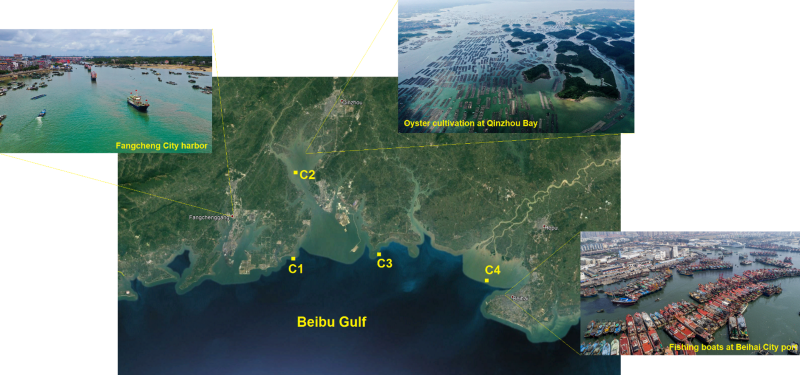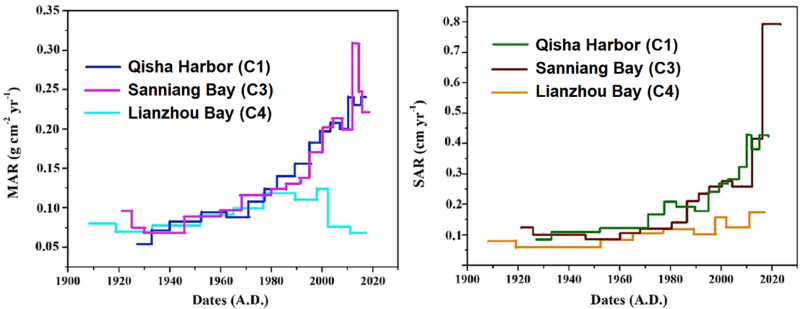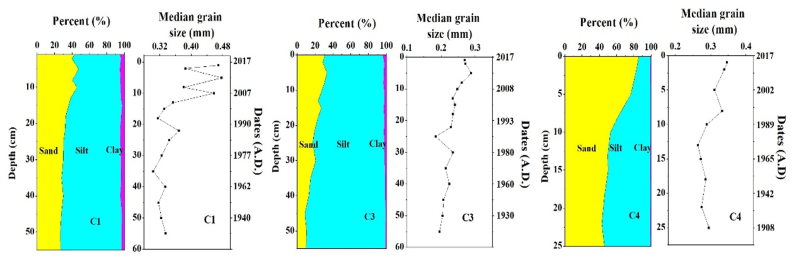
Exciting research from SES Professor Ozeas Costa (OSU Mansfield) showing the first record of sediment accumulation rates for the northwestern portion of the South China Sea has recently been published in the Journal of Environmental Radioactivity. The main author of this study is Jing Guo, a PhD student with the School of Marine Sciences (Guangxi University, China). Mr. Guo has been in Ohio since January 2019, working with Professor Costa on the analysis of his extensive dataset. Dr. Costa’s collaboration with Chinese universities began in 2014, and currently involves academic institutions in Guangdong, Zhejiang, and Guangxi provinces.
The study used depth profiles of excess 210Pb and 137Cs to determine the sediment chronologies and accumulation rates at four sites along the coast of Guangxi Province (figure above). This section of the Beibu Gulf extends along 1628 km of coastline, covering an area of approximately 129,000 km2. It is home to the fastest-growing development zone in China, and the central hub for the China-ASEAN economic cooperation strategy (also known as China’s 21st century maritime silk road). This Free-Trade Area has been growing at an annual rate of 11.7% over the last decade, with a trade volume of over $60 billion a year.
This fast development has resulted in sediment accumulation rates (SAR) up to 800% higher than those observed in the 1920s, with most of the increase happening after 1970, coinciding with the increasing rate of urbanization and development in the region. The highest increase in SAR over the last century (+877%) occurred in Sanniang Bay (site C3), and the lowest rate of increase (+283%) in Lianzhou Bay (site C4). Total organic carbon (TOC) content in these sediments has also increased over the last 100 years, and current values (0.98–1.28%) are about 170% higher than historical concentrations (before 1970). Sediments are delivered to the coastal zone by five major rivers: The Fangcheng River, which drains into the Fangcheng Bay; the Maoling and Qin rivers, which drain into the Maowei Sea (site C2); the Dafeng and Nanliu rivers, which drain into the Lianzhou Bay (site C4).
Read the full article here!



